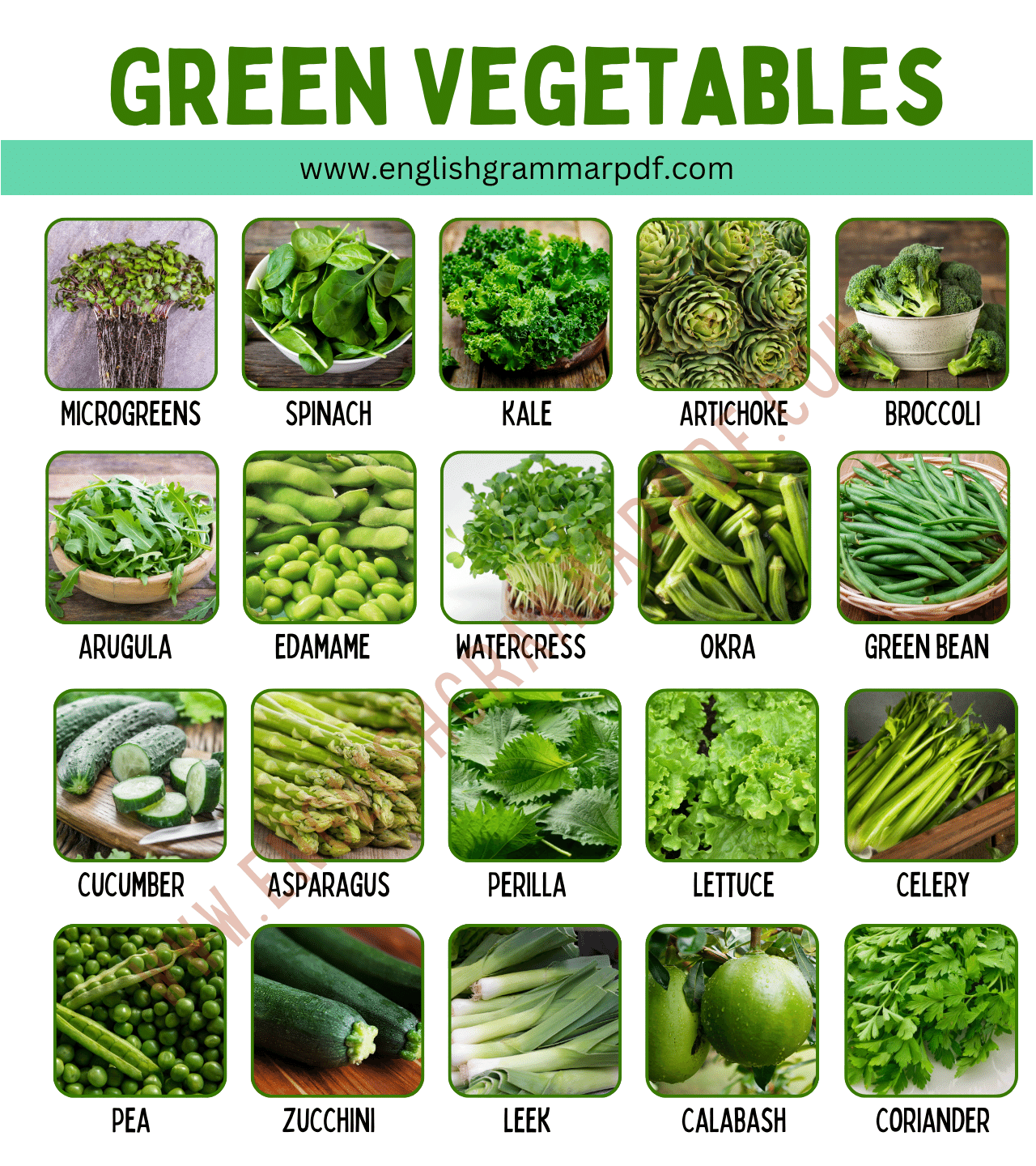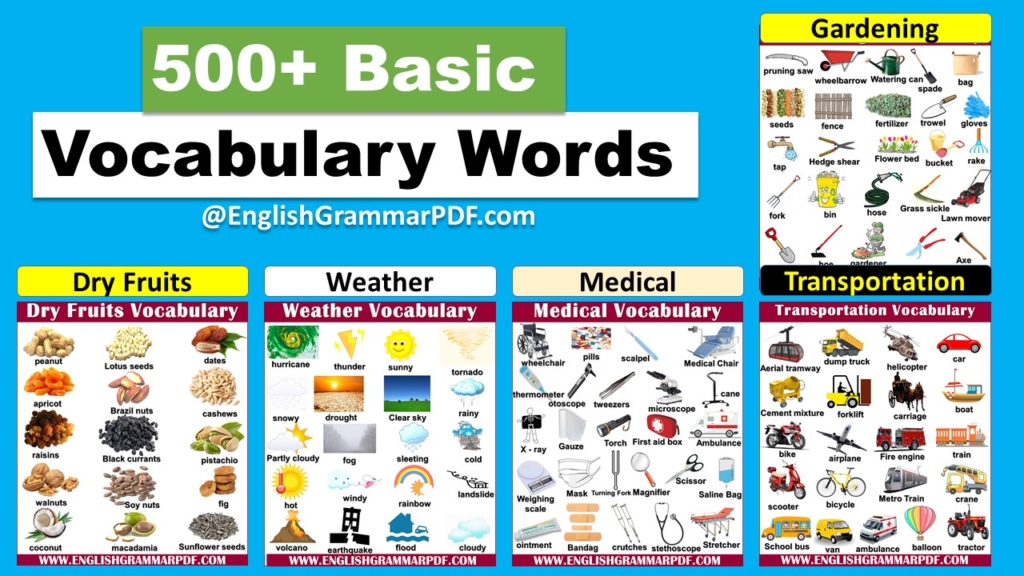Guess what? Vegetables can be superheroes for your health, and they come in so many different shades of green! If you’re learning English, knowing the names of these green goodies can be really fun and helpful. In our blog post today, we’re going to explore 30 amazing green vegetables.
And guess what’s even cooler? We’ve created a colorful infographic just for you, to make learning these names as easy as pie. So, let’s explore and discover the green wonders of the vegetable world together!
List of Green Vegetables
Below is the list of 30 green vegetable names.
- Spinach
- Kale
- Broccoli
- Peas
- Green beans
- Brussels sprouts
- Asparagus
- Lettuce
- Zucchini
- Cucumber
- Celery
- Green bell pepper
- Arugula
- Bok choy
- Collard greens
- Swiss chard
- Green cabbage
- Leeks
- Okra
- Artichoke
- Mustard greens
- Green onions (scallions)
- Watercress
- Romaine lettuce
- Endive
- Snow peas
- Sugar snap peas
- Parsley
- Chives
- Dill

Green Vegetables and Fun Facts
For ESL students, while learning fun facts isn’t essential, they can make remembering vegetable names easier and more enjoyable.
- Spinach: Popeye the Sailor Man loved spinach for its strength-boosting iron content!
- Kale: Kale is so rich in nutrients, that it’s often called a “superfood”!
- Broccoli: Did you know broccoli is related to the cabbage family and was once called “Italian asparagus”?
- Peas: Peas have been cultivated for thousands of years and were buried with the Pharaohs in Egypt.
- Green beans: Green beans can also be yellow or purple, but they all turn green when cooked!
- Brussels sprouts: These mini cabbages grow in spirals on a long stalk.
- Asparagus: Asparagus can grow up to 10 inches in just 24 hours!
- Lettuce: Lettuce was considered a sacred plant of the reproduction god Min by the ancient Egyptians.
- Zucchini: The world’s largest zucchini on record was over 8 feet long!
- Cucumber: Cucumbers are made up of 95% water, making them super refreshing.
- Celery: Celery requires more calories to eat and digest than it contains, making it a negative-calorie food!
- Green bell pepper: Green bell peppers are just unripe versions of red, yellow, or orange peppers.
- Arugula: Arugula is not just a leafy green—it’s also a member of the mustard family.
- Bok choy: Bok choy has been grown in China for over 5,000 years!
- Collard greens: Collard greens are a staple in Southern U.S. cuisine and are often cooked with spices and pork.
- Swiss chard: Swiss chard is not from Switzerland but gets its name from a Swiss botanist.
- Green cabbage: Cabbage is one of the oldest vegetables, dating back to 4,000 B.C. in China.
- Leeks: Leeks are a national emblem of Wales and were worn by Welsh soldiers for identification.
- Okra: Okra is often used as a thickener in soups and stews, thanks to its gooey texture.
- Artichoke: The artichoke is a flower bud that has not yet bloomed!
- Mustard greens: Mustard greens can have a spicy kick, much like mustard seeds.
- Green onions (scallions): Green onions can regrow their green parts if the bulbs are left in a glass of water.
- Watercress: Watercress is one of the oldest known leaf vegetables consumed by humans.
- Romaine lettuce: Romaine lettuce was named after Rome, where it was likely first grown.
- Endive: Endive is known as “witloof” in Belgium, meaning “white leaf.”
- Snow peas: Snow peas are often eaten whole, pods and all, and are a crunchy addition to salads and stir-fries.
- Sugar snap peas: Sugar snap peas are a crossbreed of garden peas and snow peas and are super sweet.
- Parsley: Parsley is not just a garnish; in large amounts, it’s packed with vitamins and minerals.
- Chives: Chives are the smallest species of the onion family and have been used in cooking for over 5,000 years.
- Dill: Dill is a unique herb that pairs wonderfully with fish and is a key ingredient in pickling.


